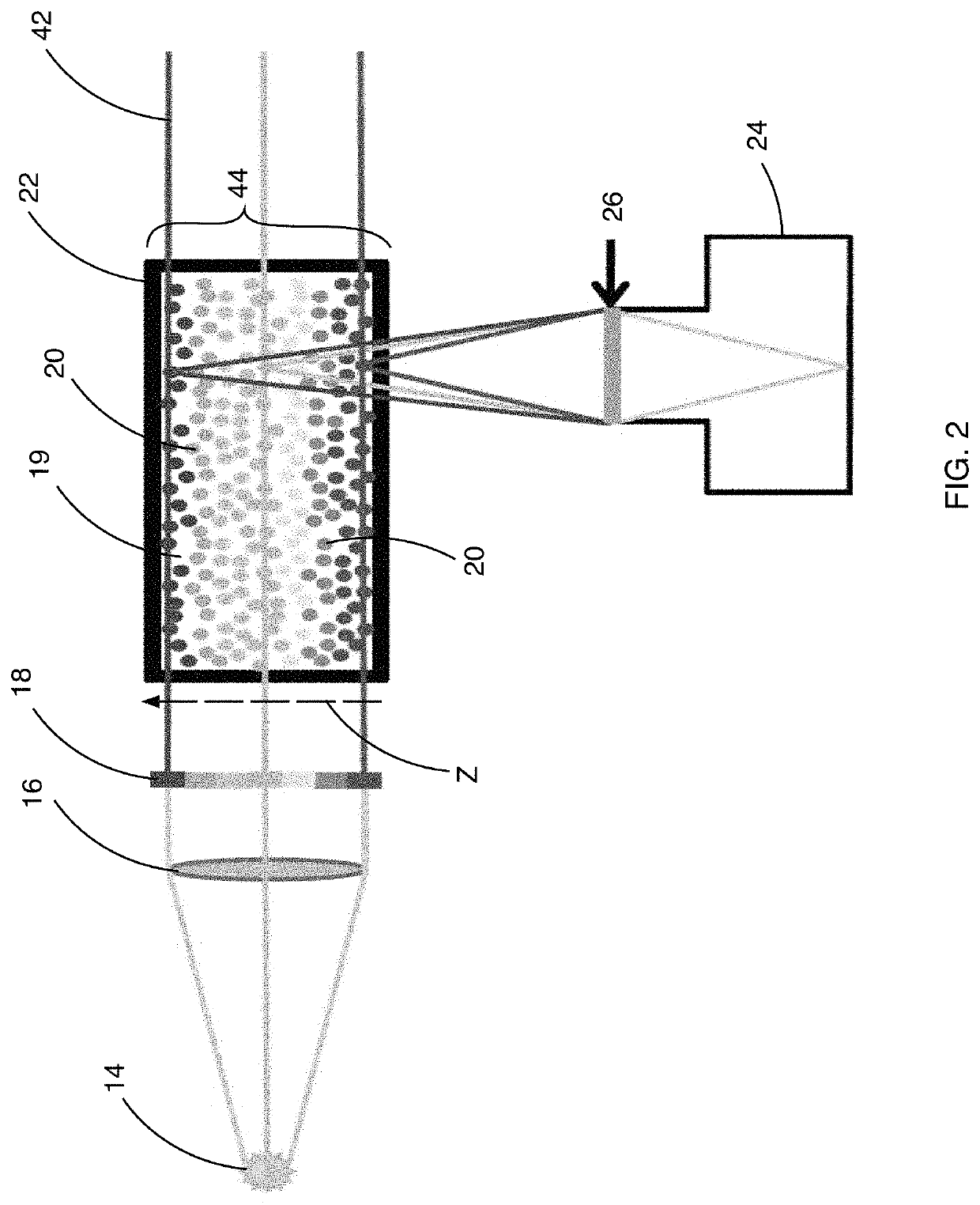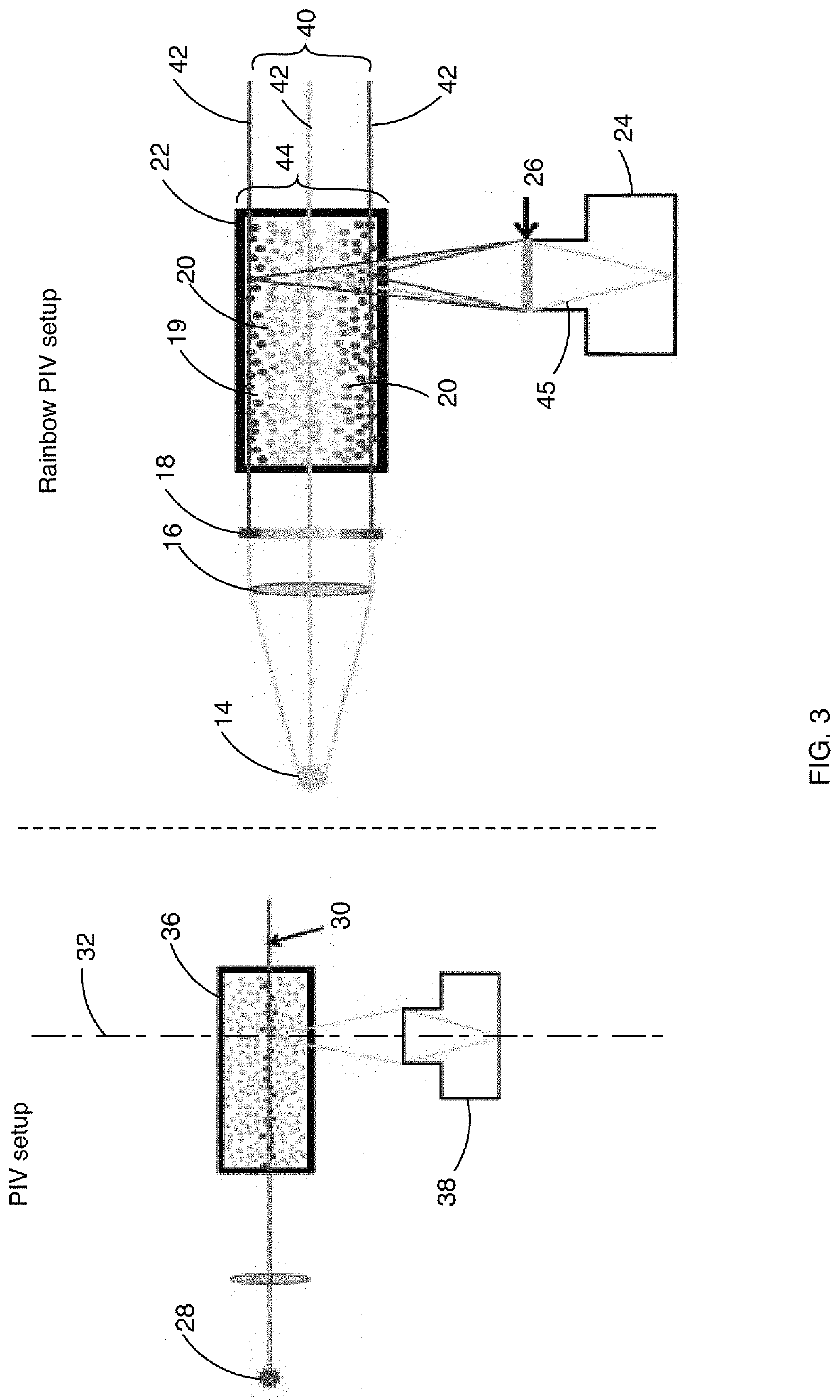Rainbow particle imaging velocimetry for dense 3D fluid velocity imaging
a 3d fluid velocity and imaging velocimetry technology, applied in the field of fluid capture, can solve the problems of difficult input data, difficult to achieve and difficult to achieve the reconstruction of all three components of the velocity field over the full 3d volume, etc., to achieve the effect of simplifying the identification of representative colors
- Summary
- Abstract
- Description
- Claims
- Application Information
AI Technical Summary
Benefits of technology
Problems solved by technology
Method used
Image
Examples
example
Experimental setup: FIG. 2 illustrates the experimental setup configuration used to evaluate the performance of the Rainbow PIV setup and method.
[0082]Rainbow light generation: The experiments were performed using a high power plasma light source 14, combined with a liquid light guide (HPLS245, Thorlabs) to generate a white light (output spectrum: [390,730 nm]. A collimator 16 was added to obtain a parallel light beam. It is important to have a parallel light beam, to guarantee that two particles, having the same depth, will be illuminated by the same colored light, i.e. light having the same wavelength.
[0083]To split the white light into a rainbow beam, a continuously linearly varying bandpass filter (LF103245, Delta Optical Thin Film) was employed. Other alternatives such as a prism and blaze grating were also considered for this purpose in view of their respective ability to generate a rainbow beam. Although a bandpass filter was eventually selected for purposes of the invention,...
PUM
 Login to View More
Login to View More Abstract
Description
Claims
Application Information
 Login to View More
Login to View More - Generate Ideas
- Intellectual Property
- Life Sciences
- Materials
- Tech Scout
- Unparalleled Data Quality
- Higher Quality Content
- 60% Fewer Hallucinations
Browse by: Latest US Patents, China's latest patents, Technical Efficacy Thesaurus, Application Domain, Technology Topic, Popular Technical Reports.
© 2025 PatSnap. All rights reserved.Legal|Privacy policy|Modern Slavery Act Transparency Statement|Sitemap|About US| Contact US: help@patsnap.com



